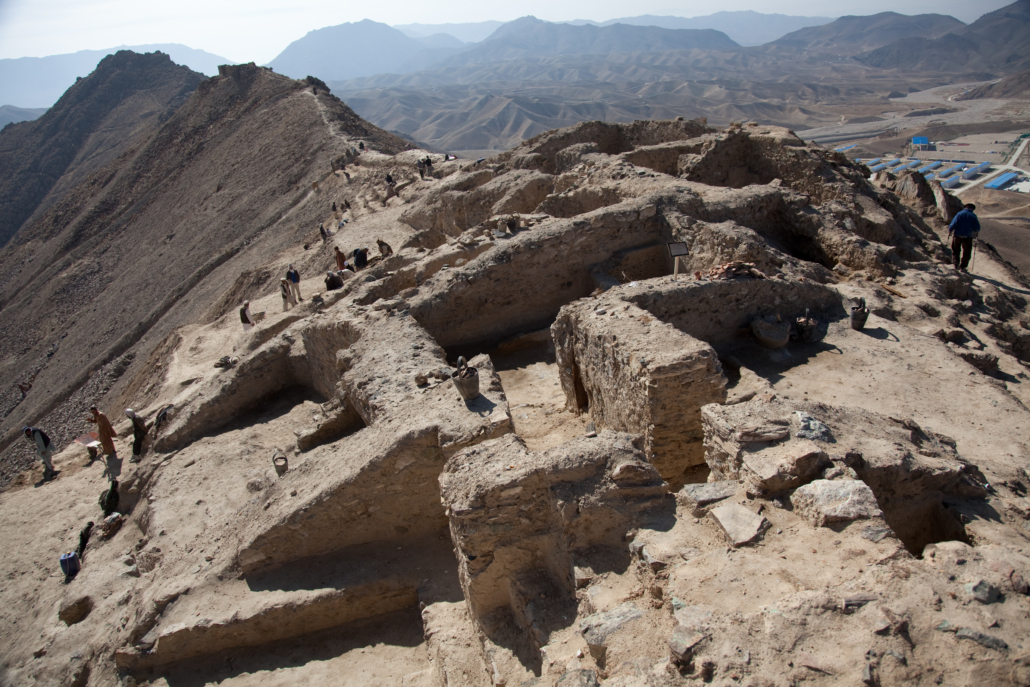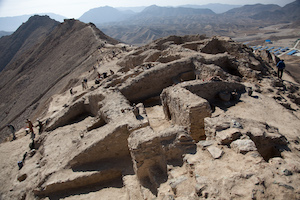
November 2011 image of an ancient Buddhist settlement at Mes Anyak in Afghanistan. Taliban leaders who once ordered the destruction of Buddhist sculptures are now committed to preserving Mes Anyak’s art and artifacts to please Chinese investors attracted by a nearby copper mine. Image courtesy of Wikimedia Commons, photo credit Jerome Starkey. Shared under the Creative Commons Attribution-Share Alike 2.0 Generic license.
MES AYNAK, Afghanistan (AP) – The ancient Buddha statues sit in serene meditation in the caves carved into the russet cliffs of rural Afghanistan. Hundreds of meters below lies what is believed to be the world’s largest deposit of copper. Afghanistan’s Taliban rulers are pinning their hopes on Beijing to turn that rich vein into revenue to salvage the cash-starved country amid crippling international sanctions.
The fighters standing guard by the rocky hillside may once have considered destroying the terracotta Buddhas. Two decades ago when the Islamic hard-line Taliban were first in power, they sparked world outrage by blowing up gigantic Buddha statues in another part of the country, calling them pagan symbols that must be purged. But now they are intent on preserving the relics of the Mes Aynak copper mine. Doing so is key to unlocking billions in Chinese investment, said Hakumullah Mubariz, the Taliban head of security at the site, peering into the remnants of a monastery built by first-century Buddhist monks.




